-
Laboratory of Astrophysics and Cosmology
-
Laborarory of Theory of Integrable Systems
-
Laboratory of Strongly-correlated Low Dimensional SystemsLaboratory of Biophysics of Macromolecules
-
Laboratory of Mathematical Modelling
-
Laborarory of Structure of Atomic Nuclei
Department of Theory of Nonlinear Processes in Condensed Matter
Head of the department – Dr. Larissa S. Brizhik.
The department incorporates:
- Laboratory of Strongly-Correlated Low Dimensional Systems.
Head of the laboratory – Dr. Sergei G. Sharapov. - Laboratory of Biophysics of Macromolecules.
Head of the laboratory – Dr. Sergei N. Volkov.
Research fields
- Theory of elementary excitations and their interactions in cryocrystals
- Theory of nonlinear excitations in condensed matter
- Theory of nonlinear transport of energy and charge in molecular and nanostructures
- Conformational mechanics of biological macromolecules
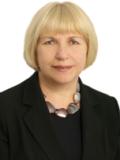



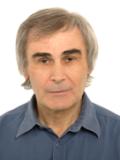

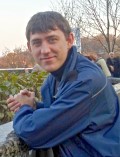

Laboratory of Strongly-correlated Low Dimensional Systems


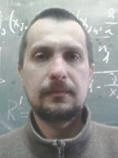
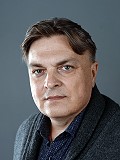
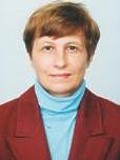
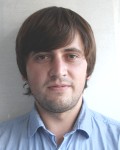
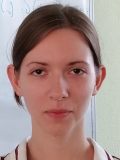

Laboratory of Biophysics of Macromolecules
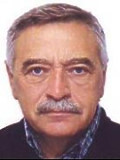
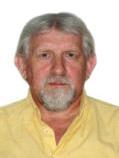
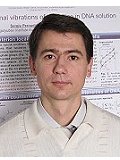


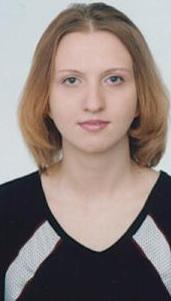
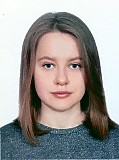
- The new invariant of the Diraq equation with the Coulomb potential is found. It supplements Diraq and Johnson-Lippman invariants, so that they together form algebra. It is shown that various solutions of the equation are various representations of this algebra. In frame of the group theory using the algebra of the spinor invariants the relation between different representations is found. The general solution of the Diraq equation is found within the algebraic approach. It is shown that the principal quantum number is not a mere combination of other quantum numbers, as it follows from the direct solving of the equation, but is a fundamental characteristic of the hydrogen atom.L. Brizhik, A.A. Eremko, V.M Loktev
- It is known that in two-dimensional relativistic Dirac systems placed in orthogonal uniform magnetic and electric fields, the Landau levels collapse as the applied in-plane electric field reaches a critical value $\pm E_c$. We study this phenomenon for a distinct field configuration with in-plane constant radial electric field. The Dirac equation for this configuration does not allow analytical solutions in terms of known special functions. The results are obtained by using both the WKB approximation and the exact diagonalization and shooting methods. It is shown that the collapse occurs for positive values of the total angular momentum quantum number, the hole (electron)-like Landau levels collapse as the electric field eaches the value +(-) E_c/2. The investigation of the Landau level collapse in the case of gapped graphene shows a number of distinctive features in comparison with the gapless case.S.G. Sharapov
- A one-dimensional nonlinear dynamical system of intra-site excitations and lattice vibrations coupled via gauge-like mechanism is studied. The system admits the semi-discrete zero-curvature representation and therefore it proves to be integrable in the Lax sense. Relaying upon an appropriately developed Darboux-Bäcklund dressing technique the explicit four-component analytical solution to the system is found and analyzed in details. Due to mutual influence between the interacting subsystems the physically meaningful solution arises as the essentially nonlinear superposition of two principally distinct types of traveling waves. The interplay between the two typical spatial scales relevant to these traveling waves causes the criticality of system's dynamics manifested as the dipole-monopole transition in the spatial distribution of intra-site excitations. The under-critical and over-critical regimes of system's dynamics are comprehensively illustrated graphically.O.O. Vakhnenko
- Using the solution of the Schrödinger equation with the Hückel-type Hamiltonian for carbon nanotubes (2m,m), analytical expressions for wave functions were obtained within the framework of the tight-binding model, and the relationship between the transmission coefficient and the band structure of chiral and achiral carbon nanotubes was analyzed. The influence of chirality on the coefficient of electron transmission through a system with a step-like potential is determined and it is shown that (2m,m) nanotubes with an average chiral angle exhibit intermediate transport properties compared to achiral (arnchair and zigzag) nanotubes.L. Malysheva
- A new class of topologically non-trivial solutions of the Landau-Lifshitz equation in the form of screw dislocations was found and investigated. The screw dislocations are realized in a helical phase of the cubic chiral magnets. A type of dislocation was found, which is continuously deformed into a skyrmion string under the action of an external magnetic field.V.P. Kravchuk
- A model of double helix deformation was built to describe changes in the macromolecule structure. In addition to elastic components (bending, twisting, stretching), the presented model includes conformational rearrangements of the macromolecule, as well as describes the relationship between the external and internal degrees of freedom of the DNA structure. The obtained shapes, values and energy of the DNA deformation sites allow us to propose a probable mechanism of recognition of key DNA sequences due to their deformation, as well as to explain the high accuracy of genetic information reproduction processes.P.P. Kanevska, S.N. Volkov
- Using the density functional theory method in the presence of a physiological environment the structure and energy of formation of atomic molecular complexes are determined groups of nucleic bases of the DNA macromolecule with hydrogen peroxide molecules and water It is shown that hydrogen peroxide forms stable complexes with atomic grains of DNA, blocking the centers of specific recognition of the macromolecule.D.V. Pyatnytskyi
- A new spin relevant invariant of the Dirac equation with the Coulomb potential is constructed. It does not commute with the known Dirac and Johnson-Lippman invariants and defines the spin degree of freedom. The general solution of the Dirac equation is found. It is described by the full set of quantum numbers which characterize hydrogen-like energy states. Spatial distribution of the charge density and spin orientation meanvalue are calculated and shown to depend significantly on the spin invariant. This can be manifested experimentally.Acad. of the NAS of Ukraine V.M. Loktev, L. Brizhik, O. Eremko
- The nonlinear dynamics of coupled PT-symmetric excitations and Toda-like vibrations on a onedimensional lattice are studied analytically and elucidated graphically. The nonlinear exciton-phonon system as the whole is shown to be integrable in the Lax sense inasmuch as it admits the zero-curvature representation supported by the auxiliary linear problem of third order. Inspired by this fact, we have developed in detail the Darboux-Bäcklund integration technique appropriate to generate a higher-rank crop solution by dressing a lower-rank (supposedly known) seed solution. In the framework of this approach, we have found rather non-trivial four-component analytical solution exhibiting the crossover between the monopole and dipole regimes in the spatial distribution of intra-site excitations. This effect is inseparable from the pronounced mutual influence between the interacting subsystems in the form of specific nonlinear superposition of two essentially distinct types of travelling waves. We have established the criterion of monopole-dipole transition based upon the interplay between the localization parameter of Toda mode and the intersubsystem coupling parameter.О.О. Vakhnenko
- Using solution of the Schroedinger equation with Hukkel type Hamiltonian for carbon nanotubes (2m,m) the analytical expressions for the wavefunctions are obtained in the model of strong coupling. The relation between the transmission coefficient and band structure of chiral and non-chiral nanotubes is analyzed. It is found the impact of non-chirality on the transmission coefficient for electrons across the system with the step-like potential. Range of parameter values is given, at which experimental observation of chirality impact on transport characteristics of carbon nanotubes is obtained.L.I. Malysheva
- Spin waves of skirmion lattices in many-layered ferromagnetic heterostructures are studied theoretically and experimentally. It is shown that strong dipole-dipole interaction leads to significant change of the positions of magnon modes which have non-zero magnetic moment. From the comparison of experimental and theoretical evolutions of spectra in the magnetic field Dzyaloshinsky-Morria coupling constant is calculated for the heterostructure Ir/Fr/Co/Pt.V.P. Kravchuk
- The structure and energy formation of molecular complexes of DNA atomic groups of sugar-phosphate backbone with molecules of hydrogen peroxide and water are studied. Using the method of molecular mechanics, approaches of quantum chemistry and the presence of a physiological environment, the interaction energies are calculated and the spatial configurations of molecular complexes of peroxide with phosphate of DNA backbone are optimized. Calculations show that under physiological conditions, hydrogen peroxide can stay near phosphate groups of DNA for a long time, blocking the centers of genetic activity of the macromolecule.D.V. Piatnytskyi, O.O. Zdorevskyi, S.N. Volkov
- The formation of a double helix of DNA in aqueous solution with hydrogen peroxide molecules and Na + counterions is modeled. Molecular mechanics shows that hydrogen peroxide molecules bind to the oxygen atoms of the phosphate groups of the double helix and thus replace the water molecules of the hydrated shell of the macromolecule. Three layers of hydrogen peroxide ordering around the phosphate groups of the DNA helix with centers of density around 2.6 and 3.3 angstroms, as well as a wide band with a center around 5 angstroms were determined. Thus, hydrogen peroxide molecules that interact with phosphates can inhibit the formation of hydrogen bonds necessary for the biological functioning of DNA.S.N. Volkov, S.M. Perepelytsya
- Equations for the scattering data and discrete spectrum were obtained for the one-dimensional Schroedinger equation with the piecewise-constant potential. The asymptotical three-scale method of squeezing the system to zero width has been developed. It has been shown that the boundary conditions in the singular point make sense only when the mutual divergence cancellation in the connection matrix is possible. Two types of the transcendental equations for the resonance sets have been derived.O.O. Zolotaryuk, Y.O. Zolotaryuk
- The dispersion law for plasmons in the quasi-one-dimensional array of Josephson junctions, that consists of the finite number of rows N and the infinite numbers of columns, is derived. If external bias is absent then the spectrum has a N-fold degenerate flat band. The degeneracy is lifted when the external bias is applied and, as a result, only one flat branch remains.D.V. Bukatova, Y.O. Zolotaryuk
- The description of the collective magnetorheological effect induced by magnetic field in elastomers with uniaxial ferromagnetic particles is proposed. The condition of consistency is used between magnetic and mechanic momenta of forces exerted on these particles in elastomer at their magnetization. The study shows that even in the case of their small concentration, the value of magnetically-induced shear can be anomalously large, reaching up to tens of percent. The deformation of magneto-active elastomer can evolve critically as a second-order phase transition if magnetic field is aligned along the easy axis of particles.Acad. of the NAS of Ukraine V.M. Loktev
- A novel family of disordered systems is proposed. This family belongs to the class of systems containing random substitutional non-Hermitian impurities. The consideration is limited by a rather simple case when the presence of substitutional point defects results in the model Hamiltonian featuring a diagonal disorder. In contrast to known models of non-Hermitian impurities, the nonzero density of states for each isolated from the host impurity is restricted to a continuous band of finite width. A method to construct corresponding impurity Hamiltonians is provided.Yu.V. Skrypnyk, Acad. of the NAS of Ukraine V.M. Loktev
- Using the methods of density functional and molecular mechanics, it has been shown that hydrogen peroxide molecules form stable complexes with the phosphate group of the DNA macromolecule. Under physiological conditions, such complexes are more energetically favourable than similar complexes with a water molecule. The energy advantage for complexes with hydrogen peroxide is achieved, in particular, due to the presence in the molecule of a torsional degree of freedom, which makes it more flexible compared to the water molecule. These results show that in living tissues, hydrogen peroxide can remain near the phosphate groups of DNA for a long time, blocking the genetic activity of the macromolecule.S.N. Volkov, D.V. Piatnytskyi, O.O. Zdorevskyi
- Two families of point interactions with bound state energy are realized from a heterostructure composed of two parallel homogeneous layers in the limit as their width and the distance between them tend to zero simultaneously. Under certain conditions described by transcendental equations, a resonant-tunneling transmission of electrons through this limit structure is shown to occur. A particular example of the singular potential having the form of the derivative of the Dirac delta-function is generalized to a whole family of point interactions, for which a single bound state does exist, contrary to the widespread opinion on the non-existence of bound states in δ-like systems.A. Zolotaryuk, Ya. Zolotaryuk
- The nonlinear model of three dynamical subsystems, coupled both in their kinetic and potential parts, has been suggested. Due to the quasi-one-dimensional spatial structure of its underlying lattice the model grasps several degrees of freedom capable to imitate the dynamical behavior of long macromolecules both natural and synthesized origins. The model admits a clear Hamiltonian formulation with the standard form of fundamental Poisson brackets and it demonstrates the complex-conjugate symmetry between two subsystems of a Toda type. The integrability of system equations is supported by their zero-curvature representation based upon the auxiliary linear problem with the relevant spectral operator of third order. In view of these facts, we have developed an appropriate two-fold Darboux-Bäcklund dressing technique capable to generate the nontrivial crop solution embracing all three coupled subsystems. The explicit crop solution to the nonlinear model is found to be of a pronounced pulson character.O.O. Vakhnenko
- The theory of curvilinear one-dimensional antiferromagnets has been developed. It has been established that the achiral antiferromagnetic spin chain behaves like a biaxial chiral magnet with effective anisotropy and Dzialoshinsky-Moria interaction. The geometry-induced Dyaloshinsky-Moria interaction leads to hybridization of magnons in the chain.K.V. Yershov, V.P. Kravchuk
- We study the manifestation of the Nernst effect in the Corbino disk subjected to the normal external magnetic field and to the radial temperature gradient. The Corbino geometry offers a precious opportunity for the direct measurement of the magnetization currents that are masked by the kinetic contributions to the Nernst current in the conventional geometry. The magnetization currents, also referred to as the edge currents, do not depend on the conductivity of the sample which is why they can be conveniently described within the thermodynamic approach. They can be related to the Landau thermodynamic potential for an infinite system. We demonstrate that the observable manifestation of this, purely thermodynamic, Nernst effect occurs as strong oscillations of the magnetic field measured in the center of the disk as a function of the external field. The oscillations depend on the temperature difference at the edges of the disk. Dirac fermions and 2D electrons with a parabolic spectrum are characterized by oscillations of different phase and frequency. We predict qualitatively different power dependencies of the magnitude of the Nernst signal on the chemical potential for normal and Dirac carriers.S.G. Sharapov
- Based on the Dirac quantum theory of the spinor field, the generelized operator of the spin-orbit interaction is found. It is shown that this operator contains not only the known Thomas-Frenkel correction, but also a new term, so that the consistent description of the influence of the spin-orbit interaction on electrons in the external potential in frame of the non-relativistic Schroedinger equation is possible only with the account of this generelized operator.L.S. Brizhik. O.O. Eremko, Acad. of the NAS of Ukraine V.M. Loktev
- An explanation is proposed for the recently observed a giant increase of the Drude peak width under applied uniaxial strain in optical spectra of monolayer graphene. The underlying mechanism of this increase can be based on resonant scattering of carriers from inevitably present impurities such as adsorbed atoms that can be described by the Fano-Anderson model. It is demonstrated that the often neglected scalar deformation potential plays the essential role in this process. The conditions necessary for the maximum effect of the giant Drude peak broadening are determined.V.O. Shubnyi, Yu.V. Skrypnyk, S.G. Sharapov, Acad. of the NAS of Ukraine V.M. Loktev
- Two types of general nonlinear integrable systems on infinite quasi-one-dimensional regular lattices are proposed. The method is suggested which allows to unify the Toda-like vibration subsystem and the self-trapping-like exciton subsystem into a single integrable system, thereby substantially extending the range of realistic physical problems that can be rigorously modeled. Several lowest conserved densities associated with either of the relevant infinite hierarchies of local conservation laws are found explicitly in terms of prototype field functions.O.O. Vakhnenko
- The properties of embedded solitons (solitons that exist despite their resonance with the linear spectrum of the system and have only isolated values of velocity) in the discrete double sine-Gordon equation with next-neighbor and second-neighbor interactions are investigated. This model describes the DC biased array of the superconductor/ferromagnet/ superconductor junctions. Depending on the sign of these interactions they can be either destructive or favorable for the embedded soliton creation. The embedded soliton existence area depends on the width of the linear spectrum: narrowing of the spectrum widens the embedded soliton existence range and vice versa.Y. Zolotaryuk, I. Starodub
- An approach to define single-point interactions under the application of external fields has been developed. The essential feature is an asymptotic method based on the one-point approximation of multi-layered heterostructures that are subject to bias potentials. In the zero-thickness limit, the matrix connecting the two-sided boundary conditions of wave function at the point of singularity has been obtained. The dependence of the reflection and transmission coefficients on the bias potential has been studied. Several "one-point" models of two- and three-terminal devices in the semiconductor physics have been elaborated. The notion of a "point" transistor has been introduced, and the existence of extremely sharp peaks as an applied voltage tunes, forming a resonance set for this one-point interaction, is shown.A.V. Zolotaryuk, Y. Zolotaryuk
- The interaction of hydrogen peroxide and water molecules with the regions of specific and non-specific recognition of DNA molecules by proteins is analyzed. These interactions are important for explanation of beam therapy of cancer. On the basis of density functional theory, the interaction energies of water and hydrogen peroxide molecules with DNA nuclear bases are calculated and optimal geometries of stable complexes are determined. The positions are found where binding of hydrogen peroxide molecule exceeds the one for water molecule.S.N. Volkov, D.V. Piatnytskyi, O.O. Zdorevskyi
- The interaction of polyamines with the DNA macromolecule was studied using molecular dynamics simulations. The polyamines molecules were found to be localized mostly in the minor groove of the double helix in the region with the specific sequence of nucleotides of A-tract type. The results of the study agree with the existing experimental data and explain the preferential localization of polyamines molecules in the DNA sites with characteristic nucleotide sequence.S.M. Perepelytsya
- It is shown that inhomogeneous curvature of magnetic wire induces motion of a domain wall in the direction of the curvature gradient increasing. An asymptotic domain wall velocity is found. The resuts are verified by micromagnetic simulations.Yu.B. Gaididei, V.P. Kravchuk, K.V. Yershov
- The two-stage mechanism of the appearance of threshold deformations in a DNA macromolecule under the action of external force is proposed. At the first stage the appearance of a bistable state and the formation of domains with different conformations in the macromolecule chain occur for some critical value of external force. On the second stage the cooperative process of the domain walls propagation happens in the macromolecule. Thus, the emergence of bistability causes the threshold effect of deformation. The calculated parameters of the threshold elongation of DNA double helix are consistent with the experimental data.S.N. Volkov
- The character of hydration of Na+, K+, Cs+ and Mg2+ counterions interacting with DNA double helix is studied using molecular dynamics simulations. The results show that structuring of the first and the second hydration shells of the ions is essential for the specific interactions with DNA. In particular, Na+ and Mg2+ interact with the DNA mostly via water molecules of the first hydration shell, while K+ and Cs+ may be dehydrated and penetrate deep into the minor groove of the double helix.S.M. Perepelytsya
- It is shown that with the accuracy of the second order relativistic corrections the Hamiltonian of particles and antiparticles in an external field can be reduced to the Hamiltonian of non-interacting electrons and positrons. Operator invariants are obtained which describe spin states of relativistic particles. The Hamiltonian of electrons in the non-relativistic approximation is shown to contain both known and new relativistic corrections.A.A. Eremko, L.S. Brizhik, Acad. of the NAS of Ukraine V.M. Loktev
- Discrete time nonlinear quantum walk dynamics are studied. In the linear limit the spectrum of this model can be reduced to the complete flat band shape, what means the absence of transport and presence of the compact localized states. Existence of the soliton-like exitations that can propagate with constant velocity has been demonstrated. Due to the flatness of the linear spectrum the soliton does not resonate with it. The absence of the linear waves also causes the super-exponential [~exp(-exp(x))] decay of the soliton amplitude.Ya. Zolotaryuk
- The new nonlinear integrable system of classical intra-molecular excitations on a ladder lattice with three structural elements in the unit cell is suggested. The Poisson structure and the Hamiltonian formulation of the system are found. In the framework of Darboux transformation for an auxiliary spectral problem the system's multicomponent soliton solution is obtained.O.O. Vakhnenko
- A new mechanism of point mutation formation in biological systems that takes into account the fluctuation appearance of complementary pairs preopened by water in the DNA double helix has been proposed. The possible proton transitions in the preopened A-T pair have been analyzed within the density functional theory, and their energies have been numerically obtained. It is shown that under formation of an opened pair, irregular tautomeric forms of the nucleic bases can be stabilized and be the origin of point mutations. The estimated probability of the occurrence of these mutations in DNA falling in the interval of 10-10-10-11 explains the known experimental facts.E.S. Kryachko, S.N. Volkov
- The mixed set of primary and intermediate fields for the integrable nonlinear Schrödinger system on a triangular ladder lattice is found out. Having been written in terms of these field variables the system is shown to split into two subsystems with qualitatively different properties of excitations. The crossover effect in the system dynamical behavior at the critical value of background parameter is established.О.О. Vakhnenko
- It is known that the Shubnikov - de Haas oscillations can be observed in the Hall resistivity, although their amplitude is much weaker than the amplitude of the diagonal resistivity oscillations. Employing a model of two-dimensional massive Dirac fermions that exhibits anomalous Hall effect, we demonstrate the amplitude of the Shubnikov - de Haas oscillations of the anomalous Hall conductivity is the same as that of the diagonal conductivity. We argue that the oscillations of the anomalous Hall conductivity can be observed by studying the valley Hall effect in graphene superlattices and the spin Hall effect in the low-buckled Dirac materials.S.G. Sharapov
- It is shown that the curvature and torsion of a ferromagnetic nanowire significantly affect the spin-polarized current induced domain wall motion along the wire. We consider the simplest case of constant curvature and torsion, corresponding nanowires in the form of three-dimensional helix. It is shown that the curvature leads to Walker breakdown, i.e. the emergence of a critical density of spin-polarized current jc, which separates two modes of motion: translational motion when j<jc and oscillating motion for j> jc. In the point j = jc a saddle-node bifurcation takes place. The nanowire torsion, in turn, leads to a shift of the material parameter of spin torque nonadiabaticity. The shift is proportional to the product of the helix chirality to the topological charge of the domain walls. This shift can be negative, that can lead to negative domain wall mobility. Basing on the obtained results we propose a practical method of experimental measurement of the nonadiabaticity parameter and the damping coefficient.Yu.B. Gaididei, V.P. Kravchuk, K.V. Yershov
- The analytical expression for the spectrum of electrons in quasi-two-dimensional space (so called 2D electrons) is found within the fundamental Dirac equation. Such system describes layered heterostructures, interfaces, crystal surfaces, etc. It is shown that the exact solution contains several spin invariants, which means possibility of the existence of many spin states of quasi-2D electrons with different spin polarization and different effects of spin-orbit interaction on the energy spectrum. The exact solution is found for electrons confined by asymmetric potential well, which includes free parameters, whose value corresponds to certain invariants. In the general case the spin quantum number determines certain value of the linear combination of all invariants. These results allow to ascertain the conditions at which the given spin state is realized, which opens new perspectives to control the spin degree of freedom of charge carriers in spintronics.A.A. Eremko, V.M. Loktev, L.S. Brizhik
- We present the analytic analysis of the spectral problem for bounded graphene fragments and finite polyene chains. The solutions of the transcendental equation for the characteristic quantum numbers are thoroughly examined and their accurate approximations are proposed. The obtained results are used for analysis of the fundamental and technologically significant properties of graphene and its daughter structures (i.e., zigzag and armchair graphene nanoribbons), and finite polyene chains of various length.L.I. Malysheva
- The variativity of governing coupling parameters in the integrable nonlinear Schrödinger system on a triangular-lattice ribbon is shown to ensure the important qualitative rearrangements in the system dynamics. Thus the longitudinal coupling parameters regulated mainly by the background values of concomitant field variables are responsible for the bifurcation of primary integrable nonlinear system into the integrable nonlinear system of Ablowitz-Ladik type. As a consequence in a critical point the number of independent field variables is reduced by a half and the system Poisson structure turns out to be degenerate. On the other hand the transverse coupling parameters regulated basically by the choice of their a priori arbitrary dependencies on time are capable to incorporate the effect of external linear potential. As a consequence the primary integrable nonlinear system with appropriately adjusted parametrical driving becomes isomorphic to the system modelling the Bloch oscillations of charged nonlinear carriers in an electrically biased ribbon of triangular lattice.O.O. Vakhnenko
- Molecular force field (CHARM), which is commonly used in computer simulations to study the structure and dynamics of macromolecules in biological systems, is modified. A new type of potential function allows us to study the processes of chemical bonds breaks, the rupture of valence angles and dihedral interactions in molecules. Modified force field implemented in the software package MBN Explorer.S.N. Volkov
- The structure functions of the mirror nuclei 14С and 14O are studied within a model "three alpha-particles plus two extra nucleons". The charge density distributions, form factors, pair correlation functions, and the momentum distributions of particles are found for these nuclei. Two spatial configurations are revealed in the ground state of 14С and 14O nuclei. The unknown experimental charge r.m.s. radius of 14O nucleus is predicted.B.E. Grinyuk, D.V. Piatnytskyi
Articles in journals, other publications
- Liguori, A., Brizhik, L., Liguori, S., Silli, L., Bangrazi, S., Petti, F., Pinti, M., Pistelli M.I., Giuliani, L. Effects of Ion Cyclotron Frequencies on Human Resistance and Reactance in 31 Healthy Subjects. Radiation 2022, 2, 357–375.
- L. Brizhik, A. Kovalev, A.Zagorodny. Life devoted to science. Part II. Low Temperature Physics/Fizyka Nyzkykh Temperatur, 2022, Vol. 48, No. 12, pp. 1103-1104.
- A.A. Eremko, L. Brizhik, V.M. Loktev. Algebra of the spinor invariants and the relativistic hydrogen atom. Submitted to Annals of Physics (Oct. 2022)
- L. Brizhik, A. Kovalev, A.Zagorodny. Alexander Davydov: Life Devoted to Science. Part I. Preface. Low Temperature Physics/Fizyka Nyzkykh Temperatur, 2022, Vol. 48, No. 11, pp. 853-856. Q3
- V. Loktev, V. Turkowskii. On the theory of nonhomogeneous nonequilibrium superconductivity in 2D system with massless fermions. LTP 48, 371 (2022).
- V. Loktev, V. Turkowskii. Nematic superconductivity in 1D system with massless fermions. LTP 48, 943 (2022).
- A. Bugrij, V. Loktev. On the theory of ideal Bose-gas thermodynamical properties at finite particle number. Ukr. J. Phys. 67, 235 (2022).
- I.O. Nimyi, V. Konye, S.G. Sharapov, V.P. Gusynin, Landau level collapse in graphene in the presence of in-plane radial electric and perpendicular magnetic fields, Phys. Rev. B 106, 085401 (2022); Q1
- A. Shutovskyi, V. E. Sakhnyuk, Y. Zolotaryuk, “Fluxon dynamics in long Josephson junctions with nontrivial current-phase relation”, Eur. Phys. J. B 95 134 (2022).
- A.V. Zolotaryuk and Y. Zolotaryuk, “Conditions for realizing one-point interactions from a multi-layer structure model”, J. Phys. A: Math. Theor 55, 085201 (2022).
- D. Bukatova and Y. Zolotaryuk, “Flat and almost flat bands in the quasi-one-dimensional Josephson junction array", J. Phys. Cond. Mat 34, 175402 (2022).
- E.A. Ponezha, “Transport spectroscopy in degenerate quantum dot”, Low Temp. Phys., 2022, Vol. 48, No 1, 70-78
- J.Baran, N.A. Davydova, M. Drozd, A. Krivchikov, E.A. Ponezha, “Spectroscopic and calorimetric investigation of cyclohexanol in different orientational states”, Mol. Cryst. Liq. Cryst. 2022, 747, №1, 30-41
- P.P. Kanevska, S.N. Volkov, Conformation impact in the deformation of DNA TATA- box. Low Temperature Physics/Fizika Nizkikh Temperatur, 48, 4 (2022) 351-358.
- E.S. Kryachko, Quantum Chemical Reactivity, Mutations and Reality, Chapter 18, 36 pp. n: Chemical Reactivity, Volume 2: Approaches and Applications, Edited by S. Kaya, L. von Szentpaly, G. Serdaroglu, and L. Guo. Elsevier. Published: 1st January 2023. (invited book chapter).
- E.Yu. Remeta and E.S. Kryachko, Modelling Amino Acid Threonine Under Ionizing Radiation: Mechanism of Fragmentation. In: Проблеми та Перспективи Реалізації та Впровадження Міждисциплінарних Наукових Досягнень. Вінниця, Європейська Наукова Платформа, 2022. с. 148-157.
- E.S. Kryachko, What Is Physics? Physics Today (Readers’ Forum) (submitted August 5, 2022; Submission code: 7573 [5-6 месяцев отведено в Physics Today на решение о публикации]).
- T. Vasiliu, F. Mocci, A. Laaksonen, L. Engelbrecht, and S. Perepelytsya, Caging polycations: Effect of increasing confinement on the modes of interaction of spermidine3+ with DNA double helices, Frontiers in Chemistry, 10, 836994 (2022).
- S.M. Perepelytsya and O.O. Zdorevskyi, Counterion atmosphere around DNA double helix: trapping of counterions at the nanoscale, Low Tem-perature Physics, 48, No. 4, pp. 293-300 (2022).
- D. Maria Azhar, Volodymyr P. Kravchuk , Markus Garst, Screw Dislocations in Chiral Magnets, Phys. Rev. Lett. 128, 157204 (2022),
- Kostiantyn V. Yershov, Attila Kákay, Volodymyr P. Kravchuk Curvature-induced drift and deformation of magnetic skyrmions: Comparison of the ferromagnetic and antiferromagnetic cases, Phys. Rev. B 105, 054425 (2022),
- L. Körber, R. Verba, Jorge A. Otálora, V. Kravchuk, J. Lindner, J. Fassbender, A. Kákay, Curvilinear spin-wave dynamics beyond the thin-shell approximation: Magnetic nanotubes as a case study, Phys. Rev. B 106, 014405 (2022),
- Mykola I. Sloika, Yuri Gaididei, Volodymyr P. Kravchuk, Oleksandr V. Pylypovskyi, Denys Makarov, Denis D. Sheka, Impact of curvature-induced Dzyaloshinskii–Moriya interaction on magnetic vortex texture in spherical caps Low Temp. Phys. 48, 1083–1089 (2022),
- Denis D. Sheka, Oleksandr V. Pylypovskyi, Oleksii M. Volkov, Kostiantyn V. Yershov, Volodymyr P. Kravchuk, Denys Makarov Fundamentals of Curvilinear Ferromagnetism: Statics and Dynamics of Geometrically Curved Wires and Narrow Ribbons (Review). Small, 18, 2105219 (2022)
- Denis D. Sheka, Volodymyr P. Kravchuk, Davide Peddis, Gaspare Varvaro, Michał Krupi´nski, Manfred Albrecht, Denise Erb, Stefan Facsko, and Denys Makarov, Curvilinear Magnetic Shells. Chapter in "Curvilinear micromagnetism. From fundamentals to applications" Edited by D. Makarov and D. Sheka. Springer, Topics in Applied Physics 146 (2022).
- O.O. Vakhnenko. Nonlinear dynamics of an integrable gauge-coupled exciton-phonon system on a regular one-dimensional lattice. Fiz. Nizk. Temp. 48 (3), 267–273 (2022).
- D. O. Oriekhov, V. P. Gusynin. Optical conductivity of semi-Dirac and pseudospin-1 models: Zitterbewegung approach, Phys. Rev. B 106, 115143 (2022).
- A.A. Eremko, L. Brizhik. Hydrogen states described by solutions of the Dirac equation: role of spinor invariants, Low Temperature Physics 48, No. 12, pp. 995-1008 (2022)
- A.A. Eremko, L.S. Brizhik, V.M. Loktev, Spin relevant invariants and the general solution of the Dirac equation for the Coulomb field, Annals of Physics, 439, 168786 (2022).
- V.P. Gusynin, O.O. Sobol, A.V. Zolotaryuk, Y. Zolotaryuk, Bound states of a one-dimensional Dirac equation with multiple delta-potentials, Low Temperature Physics 48, 1022–1032 (2022).
- A.A. Eremko, L. Brizhik. Hydrogen states described by solutions of the Dirac equation: role of spinor invariants, Фізика Низьких Температур, 48, No. 12, pp. 1127–1142 (2022).
- V.P. Gusynin, O.O. Sobol, A.V. Zolotaryuk, Y. Zolotaryuk, Bound states of a one-dimensional Dirac equation with multiple delta-potentials, Фізика Низьких Температур, 48, 1157-1168 (2022).
Articles in journals, other publications
- Yu.Pogorelov and V.M. Loktev. Electronic spectra, topological states and impurity effects in graphene nanoribbons. Low Temp. Phys. 47, № 9, 819-829 (2021).
- D. Oriekhov, V.P. Gusynin, and V.M. Loktev. Orbital susceptibility of T-graphene: Interplay of High-order van Hove singularities and Dirac cones. Phys. Rev. B 103, 195104-13 (2021).
- A.I. Bugrij and V.M.Loktev. On the theory of ideal Bose-gas. Low Temp. Phys. 47, № 9, 819-829 (2021).
- Брижик Л.С. «Вплив ангармонізму та електрон-фононної взаємодії на транспорт електронів у низькорозмірних системах». В: «Фізика м’якої речовини» (відп. ред. Юхновський І.Р.), ІФКС НАН України, Львів-Київ, 2021, 193 с. Сс. 104-106
- O.O. Vakhnenko. Coupling-managed criticality in nonlinear dynamics of an integrable exciton-phonon system on a one-dimensional lattice. Fiz. Nizk. Temp., 47 (12), 1186–1190 (2021).
- O.O. Vakhnenko. Coupling-managed criticality in nonlinear dynamics of an integrable exciton-phonon system on a one-dimensional lattice. Low. Temp. Phys., 47 (12), XXX– XXX (2021).
- L. Malysheva. “Analytic analysis of electronic and transport properties of finite polyene”. Ukr. J. Phys., vol. 66, No.7, 619 (2021). https://doi.org/10.15407/ujpe66.7.619.
- L. Malysheva. Solution of the Spectral Problem for (2m,m) Carbon Nanotubes by Green's Function Method, Phys. Stat. Solidi B, 2100264 (2021), https://doi.org/10.1002/pssb.202100264.
- B. Satywali, V.P. Kravchuk, L. Pan, M. Raju, S. He, F. Ma, A.P. Petrović, M. Garst, C.Panagopoulos, Microwave resonances of magnetic skyrmions in thin film multilayers, Nature Communications, 12, 1909, (2021).
- V. Kagalovsky, D. Nemirovsky, S.G. Sharapov, V.O. Shubnyi, Electrostatic potential and magnetic moment of radially insulating Corbino disk,Physica E: Low-dimensional Systems and Nanostructures, Volume 137, 2022, 115049, ISSN 1386-9477, https://doi.org/10.1016/j.physe.2021.115049.
- A. Shutovskyi, V.E. Sakhnyuk, Y. Zolotaryuk, “Fluxon dynamics in long Josephson junctions with nontrivial current-phase relation”, prepared for Eur. Phys. J.B.
- D.V. Piatnytskyi, O.O. Zdorevskyi and S.N. Volkov, Interaction of hydrogen peroxide molecules with non-specific DNA recognition sites. Eur. Phys. J. D, 75, 24 (2021)
- D.V. Piatnytskyi, O.O. Zdorevskyi, S.N. Volkov “Interaction of hydrogen peroxide molecules with non-specific DNA recognition sites”, Eur. Phys. J. D 75, 24 (2021).
- Bubon T.L., Perepelytsya S.M. Low-frequency vibrations of water molecules in DNA minor groove. Eur. Phys. J. E 44, 84 (2021). https://doi.org/10.1140/epje/s10189-021-00080-3 (Q3)
- Брижик Л.С. «Транспорт електронів на великі відстані через альфа-спіралі». В: «Фізика м’якої речовини», (відп. ред. Юхновський І.Р.), ІФКС НАН України, Львів-Київ, 2021, 193 с. Сс. 102—103
- O.O. Vakhnenko. Coupled nonlinear dynamics in the three-mode integrable system on a regular chain. Ukr. J. Phys., 16(7), 6016–611 (2021). https://doi.org/10.15407/ujpe66.7.601
- O.O. Vakhnenko and A.P. Verchenko. Nonlinear system of PT-symmetric excitations and Toda vibrations integrable by the Darboux–Bäcklund dressing method . Proc. R.Soc. A, 477(2256), 20210562 (18 pages) (2021). https://doi.org/10.1098/rspa.2021.0562
- B. Wolba, O. Gomonay, V.P. Kravchuk, Chaotic antiferromagnetic nano-oscillator driven by spin torque, Phys. Rev. B 104, 024407 (2021).
- Engelbrecht L., Mocci F., Wang Y., Perepelytsya S.M., Vasiliu T., Laaksonen A. Molecular perspective on solutions and liquid mixtures from modelling and experiment. In: Soft Matter Systems for Biomedical Applications. Springer Proceedings in Physics, vol 266. Springer, Cham P. 53-84 (2022). https://doi.org/10.1007/978-3-030-80924-9_3
- Mocci F., Laaksonen A., Engelbrecht L., Vasiliu T., Perepelytsya S. NA-Polyamine Interactions: Insight from Molecular Dynamics Simulations on the Sequence-Specific Binding of Spermidine3+. In: Soft Matter Systems for Biomedical Applications. Springer Proceedings in Physics, vol 266. Springer, Cham. P. 163-192 (2022). https://doi.org/10.1007/978-3-030-80924-9_6
- O.O. Vakhnenko. Prototype and reduced nonlinear integrable systems with modulated pulson behavior. Wave Motion, 104, 102745 (14 pages) (2021). https://doi.org/10.1016/j.wavemoti.2021.102745
- O.O. Vakhnenko. Nonlinear integrable excitations on a regular one-dimensional lattice. Phys.lett. A, 405, 127431 (6 pages) (2021). https://doi.org/10.1016/j.physleta.2021.12743
- S.N. Volkov, On possible role of hydrogen peroxide molecules in ion beam therapy of cancer cells. Low Temperature Physics/Fizika Nizkikh Temperatur, 47, 3, 235 (2021)
- S.M. Perepelytsya, J. Ulicny, and S.N. Volkov, Molecular dynamics study of the competitive binding of hydrogen peroxide and water molecules with the DNA phosphate groups. Eur. Biophys. J., 50, 759 (2021)
- D.V. Piatnytskyi, O.O. Zdorevskyi and S.N. Volkov, Interaction of hydrogen peroxide molecules with non-specific DNA recognition sites. Eur. Phys. J. D, 75: 24 (2021)
- A.V. Zolotaryuk and Y. Zolotaryuk, “Scattering data and bound states of a squeezed double-layer structure'', J. Phys. A: Math. Theor. 54, 035201 (2021).
- A.V. Zolotaryuk and Y. Zolotaryuk, “Conditions for realizing one-point interactions from a multi-layer structure model”, accepted to J. Phys. A: Math. Theor.
- В.М. Локтєв. Чи має фундаментальна наука належний статус в Україні? Вісник НАН України № 6, 50-57 (2021).
- В.М. Локтєв. Якщо ситуація з наукою в країні не зміниться кардинально, Україні не допоможе сам Господь Бог. Вісник НАН України. № 12, хх (2021).
Preprints
- L. Malysheva. Green functions for a chain subjected to a uniformly varying field in the context of electron transmission. arXiv:2111.08803.
- M. Azhar, V.P. Kravchuk, M. Garst, Screw dislocations in cubic chiral magnets, arXiv:2109.04338v1 (2021).
- D. Bukatova and Y. Zolotaryuk, “Flat and almost flat bands in the quasi-one-dimensional Josephson junction array", submitted to J. Phys. Cond. Mat, JPCM-119791, arxiv http://arxiv.org/abs/2112.02555.
- L.S. Brizhik, A.A. Eremko, V.M. Loktev, General solution vs spin invariant eigenstates of the Dirac equation with the Coulomb potential. ArXiv 2111.08552 - [cond-mat.mes-hall], November 16, 2021. http://arxiv.org/abs/2111.08552 – 1230
Papers at conferences and seminars
- L. Brizhik. “Nonlinear electromagnetic properties of living matter and selfregulation processes”. Book of Abstracts of the International Workshop “Quantum Electrodynamics of Living Systems” (Istituto Europeo di Shiatsu, Florence, Italy). April 17-18, 2021. P. 3.- https://www.shiatsu.mi.it/seminari/April_17_2021
- L. Brizhik. “Meridians from the point of view of Quantum Electrodynamics”. Book of Abstracts of the International Workshop “Quantum Electrodynamics of Living Systems” (Istituto Europeo di Shiatsu, Florence, Italy). April 17-18, 2021. P.4. - https://www.shiatsu.mi.it/seminari/April_18_2021
- Mocci F., Laaksonen A., Engelbrecht L., Vasiliu T., Perepelytsya S. Mechanisms of spermidine3+ interactions with the DNA double helix at the nanoscale. Book of abstracts: 7-th International Conference NANOBIOPHYSICS: Fundamental and Applied Aspects. October 4-10, Kharkov, Ukraine. P. 77.
- Mocci F., Laaksonen A., Engelbrecht L., Vasiliu T., Perepelytsya S. Modeling the specific interaction of metal and molecular counterions with DNA double helix. Записки Української науково-дослідницької асоціації: тези доповідей Всеукраїнської конференції наукових дослідників (Львів, 19-25 вересня 2021 року). – Львів : ЛНУ імені Івана Франка, 2021. – 188 с.. 19-25 вересня 2021. Львів, Україна. С. 179.
Articles in journals, other publications
- V.M. Kalita, I.M. Ivanova, and V.M.Loktev. Magnetorheological effect in elastomers with uniaxial ferromagnetic particles. Cond. Matt. Phys. B 23, No 2, 23608-9 (2020).
- Yu.V. Skrypnyk and V.M. Loktev. On the theory of systems with substitutional non-Hermitian disorder. Low Temp. Phys. 46, № 8, 1028-1032 (2020).
- Yu.G. Pogorelov, V.M. Loktev, and D. Kochan. Impurity resonance effects in graphene ocal spectra at impurity and neighbouring sites in graphene: resonance manifestation. Phys. Rev. B 102, 155414-18 (2020).
- L. Brizhik, A. Foletti. Impact of oscillating magnetic field on charge transport processes in the light of possible biological effects (Submitted to J. Biophys, 2020).
- A. Korniienko, A. Kákay, D. Sheka, V. Kravchuk. Effect of curvature on the eigenstates of magnetic skyrmions, Physical Review B 102, 014432 (2020).
- K. Yershov, V. Kravchuk, D. Sheka, U. Rößler. Curvature effects on phase transitions in chiral magnets, SciPost Phys. 9, 043 (2020).
- I.V. Sukhenko, S.G. Sharapov, and V.P. Gusynin. Differential entropy per particle in Dirac semimetals in external magnetic field , ФНТ 46, 322 (2020).
- O.O. Vakhnenko. Integrable nonlinear triplet lattice system with the combined inter-mode couplings. Phys. J. Plus, 135(09), 769 (16 pages) (2020).
- S.N. Volkov. On possible role of hydrogen peroxide molecules in ion beam therapy of cancer cells, Low Temp. Phys., (accepted for publication 04.11.2020).
- K. Yershov, V. Kravchuk, D. Sheka, J. van den Brink, A. Saxena. Domain wall diode based on functionally graded Dzyaloshinskii–Moriya interaction, Appl. Phys. Lett. 116, 222406 (2020)
- O. Pylypovskyi, V. Kravchuk, O. Volkov, J. Faßbender, D. Sheka, D. Makarov. Unidirectional tilt of domain walls in equilibrium in biaxial stripes with Dzyaloshinskii–Moriya interaction, J. Phys. D: Appl. Phys. 53 395003 (2020).
- A.V. Kavokin, B.L. Altshuler, S.G. Sharapov, P.S. Grigoryev, and A.A. Varlamov. The Nernst Effect in Corbino Geometry, Proceedings of the National Academy of Sciences 117, 2846–2851 (2020).
- D. Grassano, M. D'Alessandro, O. Pulci, S.G. Sharapov, V.P.Gusynin, A.A. Varlamov. Work function, deformation potential, and collapse of Landau levels in strained graphene and silicene, Phys. Rev. B 101, 245115 (2020).
- А.Г. Загородній, Ю.I. Iзотов, Е.Г. Петров, Б.I. Лев, В.П. Гусинiн, Ю.О. Ситенко, Л.С. Брижик. Академiк НАН України Вадим Михайлович Локтєв (до 75-рiччя вiд дня народження). Укр. фiз. журн. 2020. Т. 65, No 6, 544-547.
- S. Perepelytsya. Positively and negatively hydrated counterions in molecular dynamics simulations of DNA double helix. Ukr. J. Phys. 65, No6, 510-520 (2020).
- Є.С. Крячко. Водневий зв'язок і ДНК: 66-річна ретроспектива (в короткому викладі). [Пам'яті Юрія Павловича Благого (29.07.1929 - 24.04.2018) присвячується.]Біофізичний Вісник 43, № 1, 148-173 (2020).
- Є.С. Крячко. Щодо гіпотези Уотсона-Кріка про рідкісну таутомерну мутацію і реальність. Біофізичний Вісник 43, № 1, 121-132 (2020).
- O.O. Zdorevskyi, S.M. Perepelytsya. Dynamics of K+ counterions around DNA double helix in the external electric field: a molecular dynamics study, Eur. Phys. J. E 43: 77 (2020).
Preprints
- D.V. Piatnytskyi, O.O. Zdorevskyi and S.N. Volkov. Interaction of hydrogen peroxide molecules with non-specific DNA recognition sites. arXiv: 2004.14017[physics.bio-ph] (2020).
- S.M. Perepelytsya, J. Ulicny, and S.N. Volkov. Molecular dynamics study of the competitive binding of hydrogen peroxide and water molecules with the DNA phosphate groups. arXiv: 2004.11882 [q-bio] (2020).
- P.P. Kanevska, S.N. Volkov. The effect of DNA conformation changes on the coupling of the macromolecule deformation components. arXiv: 2011.14772 [cond-mat.soft] (2020).
- P.P. Kanevska, S.N. Volkov. Conformational impact on deformation of DNA TATA-box. arXiv: 2012.03696 [cond-mat.soft] (2020).
- T. Bubon, S. Perepelytsya. Low-frequency vibrations of water molecules in DNA minor groove. 2020 arXiv:2010.15967
- A. Eremko, L. Brizhik, and V. M. Loktev. General solution of the Dirac equation with the Coulomb potential, arXiv:2009.09838v1, [quant-ph] (17 Sept2020).
- A.A. Eremko, L. Brizhik, V.M. Loktev. Generalized spin-orbit interaction in two-dimensional electron systems. ArXiv 2003.14245 [cond-mat.mes-hall]. March 23, 2020.
Papers at conferences and seminars
- L. Brizhik. Пленарна доповідь "Soliton facilitated long-range electron transport in donor-polymer-acceptor systems" на Міжнародній он-лайн конференції "XII International Conference "Electronic Processes in Organic and Inorganic Materials" (ICEPOM-12) (Кам'янецьк-Подільський, 1-5 червня 2020 р.)
- S.G. Sharapov. "Thermoelectric and thermomagnetic phenomena: from history to the Nernst effect in Corbino geometry", International workshop Photon – graphene interactions: phenomena and applications, Kyiv, February 13-14, 2020.
- S.G. Sharapov. "Thermoelectric and thermomagnetic phenomena", 2nd UKRATOP Workshop "Topological Phenomena in Quantum Materials", June 29 –July 2, 2020.
- С.Г. Шарапов. " Thermoelectric and thermomagnetic phenomena", Колоквіум. Мудра макитра, 12 вересня, 2020. (https://www.youtube.com/watch?v=i-8oR7vmhLs&fbclid=IwAR0I6vdawbxK2OO8tdPHE4IZ0VS45sqQS50YUtUpm7CLsF1bna1nCBLgdcI).
- S.N. Volkov. Conformational Solitons in DNA macromolecule. XI Conference of Young Scientists "PROBLEMS OF THEORETICAL PHYSICS", BITP, 21-23.12.2020. (Запрошена доповідь).
- V. Kravchuk. Geometrical phenomena in chiral magnets, Retreat and Network meeting "Skyrmionics: Topological Spin Phenomena in Real-Space for Applications", 2-4 September 2020, Bad Honnef, Germany. (Усна доповідь).
- V. Kravchuk. Topological magnetic solitons in curvilinear low-dimensional nanomagnets, XX Workshop and Award for young researchers, 15-16 October, Lviv, Ukraine. (Пленарна лекція).
- S.M. Perepelytsya. UKRATOP Days 2020 Topological Effects in Quantum Materials June 29 - July 2, 2020 "Horizons of the Bogolyubov Institute for Theoretical Physics: From Quarks to Biophysics". Kiev, July 1, 2020 (запрошена)
- L. Brizhik. Запрошена доповідь на он-лайн семінарі "Basic information about psoriasis and protective role of melanin against UV damage in human skin: role of nonlinear excitations in DNA". Семінар організовано д-ром Енріко Фермі (Мілан, Італія) 7 квітня 2020 р.
- В.М. Локтєв. Онлайн конференція з фізики студентів КПІ. Київ, травень 2020.
Articles in journals, other publications
- Yuri Gaididei, Christian Marschler, Mads Peter Soerensen, Peter L. Christiansen, Jens Juul Rasmussen, Jens Starke. Pattern Formation In Flows of Asymmetrically Interacting Particles: Peristaltic Pedestrian Dynamics as a Case Study. Evolution Equations and Control Theory 8, Number 1, March 2019 pp. 73-100.
- Yuri Gaididei, Kostiantyn V. Yershov, Denis D. Sheka, Volodymyr P. Kravchuk, and Avadh Saxena. Magnetization-induced shape transformations in flexible ferromagnetic rings, Phys. Rev. B 99, 014404 (2019).
- Anastasiia Korniienko, Volodymyr P. Kravchuk, Oleksandr V. Pylypovskyi, Denis D. Sheka, Jeroen van den Brink, Yuri Gaididei. SciPost Phys. 7, 035 (2019).
- Volodymyr P. Kravchuk, Olena Gomonay, Denis D. Sheka, Davi R. Rodrigues, Karin Everschor-Sitte, Jairo Sinova, Jeroen van den Brink, Yuri Gaididei. Spin eigenexcitations of an antiferromagnetic skyrmion, Physical Review B 99 P. 184429 (2019).
- Kostiantyn V. Yershov, Volodymyr P. Kravchuk, Denis D. Sheka, Jeroen van den Brink, Yuri Gaididei. Spontaneous deformation of flexible ferromagnetic ribbons induced by Dzyaloshinskii-Moriya interaction, Phys. Rev. B 100 P. 140407(R) (2019)
- O.O. Vakhnenko. Four-component integrable systems inspired by the Toda and the Davydov–Kyslukha models. Wave Motion 88, 1‒12 (2019).
- O.O. Vakhnenko. Nonlinear integrable systems containing the canonical subsystems of distinct physical origins. Physics Letters A 384(3), 126081 (9 pages) (2020).
- A. Onipko and L. Malysheva. On the Theory of Steady Current in Electric Contacts. Submitted to Phys. Rev. B (2019).
- О.О. Єремко, Л.С. Брижик, В.М. Локтєв. Узагальнена спін-орбітальна взаємодія та її прояв у двовимірних електронних структурах, УФЖ. 2019. 64, №6, с. 460-472.
- L. A. Cisneros-Ake, L. Brizhik. Energy transfer by Holstein solitons in a one-dimensional anharmonic continuum medium, Chaos, Sol. and Fractals, 119, 343-354 (2019), DOI: 10.1016/j.chaos.2018.12.025.
- R. Grasso, F. Musumeci, A. Triglia, L. Brizhik, A. Scordino. Impact of structure on the delayed luminescence of D-Glucose-based polymer chains, J. Photochem. Photobiol. B: Biol., September 2019, 111589 (9 pp); https://doi.org/10.1016/j.jphotobiol.2019.111589
- V.O. Shubnyi, Y.V. Skrypnyk, S.G. Sharapov and V.M. Loktev. Effect of resonant impurity scattering of carriers on the Drude-peak broadening in uniaxially strained graphene, Phys. Rev. B 99, 235421 (2019).
- S.G. Sharapov et al. Transport Spectroscopy of the Field Induced Cascade of Lifshitz Transitions in YbRh2Si2, J. Phys. Soc. Jpn. 88, 104702 (2019).
- I.O. Starodub, Y. Zolotaryuk. Fluxon interaction with the finite-size dipole impurity, Phys. Lett. A, 2019, vol. 383, p. 1419-1426.
- A.V. Zolotaryuk, G. P. Tsironis, Y. Zolotaryuk. Point Interactions With Bias Potentials, Frontiers in Physics, 2019, vol. 7, article 87.
- Y. Zolotaryuk, I.O. Starodub. Embedded solitons in the double sine-Gordon lattice with next-neighbor interactions, Phys. Rev. E, 2019, vol. 100, 032216.
- Perepelytsya S., Uličný J., Laaksonen A., Mocci F. Pattern preferences of DNA nucleotide motifs by polyamines putrescine2+, spermidine3+ and spermine4+. Nucleic Acids Research. 47, 6084-6097 (2019).
- O.O. Zdorevskyi, D.V. Piatnytskyi, S.N. Volkov. On a possibility of the blocking of DNA specific recognition sites by hydrogen peroxide molecules during ion beam therapy. Dopov. Nac. akad. nauk Ukr. 2019. №6, p.82 – 89.
- V.N. Ermakov and E.A. Ponezha, Nonlinear resonant tunneling as mechanism of cool electrons filtration. Low Temp. Phys. 45, 803 (2019).
Preprints
- Volodymyr P. Kravchuk, Olena Gomonay, Denis D. Sheka, Davi R. Rodrigues, Karin Everschor-Sitte, Jairo Sinova, Jeroen van den Brink, Yuri Gaididei. Spin eigen-excitations of an antiferromagnetic skyrmion, arXiv.org /cond-mat / arXiv:1902.09846 (1919).
- Denis D. Sheka, Oleksandr V. Pylypovskyi, Pedro Landeros, Yuri Gaididei, Attila Kakay, and Denys Makarov. Micromagnetic. Theory of Curvilinear Ferromagnetic Shells, arXiv:1904.02641v1 [cond-mat.mes-hall] 4 Apr 2019.
- Volodymyr P. Kravchuk, Ulrich K. Rößler, Jeroen van den Brink, Markus Garst. Solitary wave excitations of skyrmion strings in chiral magnets (2019), arXiv:1902.01420
- L.S. Brizhik, Jingxi Luo, B.M.A.G. Piette, W.J. Zakrzewski. Long-range electron transport mediated by alpha-helices, arXiv:1909.08266v1 [cond-mat-other]
- A.V. Kavokin, B.L. Altshuler, S.G. Sharapov, P.S. Grigoryev, and A.A. Varlamov. The Nernst Effect in Corbino Geometry, arXiv:1911.10325
- O.O. Zdorevskyi, D.V. Piatnytskyi, S.N. Volkov. Blocking of DNA specific recognition sites by hydrogen peroxide molecules in the process of ion beam therapy of cancer cells. arXiv:1811.11026
Papers at conferences and seminars
- L.S. Brizhik. Electron-phonon coupling and electron correlations in low-dimensional systems. Book of Abstracts. Bogolyubov Kyiv Conference Problems оf Theoretical And Mathematical Physics (September 24-26, 2019, Kyiv, Ukraine). P. 59. Kyiv, 2019.
- L.S. Brizhik. Role of biophotons in self-organization of the alive. Book of Abstracts of the 4th Summer School “Biophotons” (Wietow, Germany, August 1-3, 2019). P. 4-5.
- L.S. Brizhik. Soliton Induced Electromagnetic Field and Biophotons. Book of Abstracts of the 4th Summer School “Biophotons” (Wietow, Germany, August 1-3, 2019). P. 6-7
- L.S. Brizhik. Nonlinear quantum electron states and their role in biological systems. Book of Abstracts of the International Workshop “Quantum Physics in Applications to Physics of the Alive” (December 13-14, 2019, Milan, Italy). Pp. 8-9.
- O.O. Vakhnenko. Integrable nonlinear Schrödinger system on an intercalated ladder lattice. Bogolyubov Kyїv Conference “Problems of Theoretical and Mathematical Physics” dedicated to the 110th anniversary of M.M. Bogolyubov. 24‒26 September 2019, Kyїv (Ukraine). Program and Abstracts, 118 (2019).
- Volodymyr P. Kravchuk, Helen Gomonay, Denis Sheka, Karin Everschor-Sitte, Davi Rodrigues, Jeroen van den Brink, and Yuri Gaididei, Spin eigen-excitations of the antiferromagnetic skyrmion, DPG-Frühjahrstagung (зустріч німецького фізичного товариства) 31 March – 5 April 2019, Regensburg, Germany. (усна доповідь);
- Yu. Gaididei, V.P. Kravchuk, D.D. Sheka, Effects of curvature in low-dimensional ferromagnets, International workshop “Curvilinear Micromagnetism”, 22-25 May 2019, Kyiv, Ukraine (запрошена доповідь).
- Volodymyr P. Kravchuk, Ulrich K. Rößler, Jeroen van den Brink, Markus Garst. Nonlinear dynamics of skyrmion strings, International Workshop on Topological Structures in Ferroic Materials (TOPO 2019), Prague, Czech Republic, June 16–20, 2019 (запрошена доповідь).
- Kostiantyn V. Yershov, Denis D. Sheka, Volodymyr P. Kravchuk, Avadh Saxena, Yuri Gaididei. Magnetically controlled geometry of flexible ferromagnetic rings, APS March Meeting 2019, Bulletin of the American Physical Society, P. E39.00011 (2019) – усна доповідь
- Kostiantyn V. Yershov, Volodymyr P. Kravchuk, Denis D. Sheka, Avadh Saxena, Yuri Gaididei. Shape transformations of elastic ferromagnetic systems, International workshop Curvilinear Micromagnetism. May 22-25, 2019, Kyiv, Ukraine (Book of Abstracts), P. 12-13 (2019) – усна доповідь
- Perepelytsya S.M., Uličný J., Laaksonen A., Mocci F. Modeling the structure and dynamics of DNA with organic and inorganic counterions. Final AMMODIT Conference “Mathematics for Life Sciences”. Kiev, March 18-22, 2019. Kiev, Ukraine. Book of abstracts P. 32 (oral)
- Perepelytsya S.M. Dynamics of counterions in the hydration shell of DNA double helix. Dipartamento di Scienze Chimiche e Geologiche Dell' Universita degli Studi di Cagliari. https://www.unica.it/unica/it/dip_scienzechimicgeo_35.page?contentId=AVS182764 July 24, 2019 - Cagliari, Sardinia (Italy). (Oral)
- Perepelytsya S.M. Effects of counterion interactions with DNA double helix: Manifestations in experiments and MD simulations. Scientific Summer School Molecular Modeling: Real Applications and New Approaches July 29 - August 2, 2019 - Pula, Sardinia (Italy). (Poster)
- Perepelytsya S.M., Uličný J., Laaksonen A., Mocci F. Modeling specific interaction of polyamines with DNA double helix. Bogolyubov Kyiv Conference Problems of Theoretical and Mathematical Physics. September 24-26, 2019. Kiev, Ukraine. Book of abstracts P. 64 (oral)
- Oleksii Zdorevskyi, Dmytro Piatnytskyi, Sergey N. Volkov. Blocking of DNA sites of specific recognition by hydrogen peroxide molecules in the process of ion beam therapy. Book of abstracts of IX young scientists conference “Problems of Theoretical Physics”, December 4 – 5, 2018, Kyiv, Ukraine – p. 4.
- D.V. Piatnytskyi, O.O. Zdorevskyi, S.N. Volkov. Binding of hydrogen peroxide with DNA phosphate group. Book of abstracts of Final AMMODIT Conference “Mathematics for Life Sciences”, March 18 – 22, 2019, Kyiv, Ukraine – p. 36.
- O.O. Zdorevskyi, D.V. Piatnytskyi, S.N. Volkov, Competitive interaction of hydrogen peroxide and water molecules with specific DNA recognition sites in the process of ion beam therapy. Abstracts of Joint 12th EBSA 10th ICBP-IUPAP Biophysics Congress, July 20 – 24, 2019, Madrid, Spain – p.7.
- V.S. Vasilevsky, B.E. Grinyuk, D.V. Piatnytskyi. Structure features of mirror nuclei 14C and 14O within a five-cluster model. Book of abstracts of Bogolyubov Kyiv Conference “Problems of Theoretical and Mathematical Physics”, September 24 – 26, 2019, Kyiv, Ukraine – p. 81
- S.G. Sharapov. Electro Effect of resonant impurity scattering of carriers on Drude peak broadening in uniaxially strained graphene . Book of Abstracts. Bogolyubov Kyiv Conference Problems оf Theoretical and Mathematical Physics (September 24-26 2019, Kyiv, Ukraine). Kyiv, 2019.
- Y.V. Skrypnyk and V.M. Loktev. Mobility edge trajectory in classical Lifshitz problem. Book of Abstracts. Bogolyubov Kyiv Conference Problems оf Theoretical And Mathematical Physics (September 24-26 2019, Kyiv, Ukraine). Kyiv, 2019.
- V.N. Ermakov, E.A. Ponezha. Correlation Mechanism of Cold Electrons Filtration in Resonant Tunneling Devices. Spectroscopy of molecules and crystals, Book of Abstracts of XXIV Galyna Puchkovska International School-Seminar (Odesa, Ukraine, August 25-30, 2019, p. 130).
- V.N. Ermakov and E.A. Ponezha. Nonlinear resonant tunneling as mechanism for coldl electrons filtration in nanodevices, Book of Abstracts of Bogolyubov Kyiv Conference “Problems of Theoretical and Mathematical Physics” (Kyiv, Ukraine, September 24-26, 2019, p. 61).
- J. Baran, N.A. Davydova, M. Drozd, V.Ya. Reznichenko, E.A. Ponezha. Polymorphism and its Manifestation in the IR Spectra of 2-phenol-o-cresol Spectroscopy of molecules and crystals, Book of Abstracts of XXIV Galyna Puchkovska International School-Seminar (Odesa, Ukraine, August 25-30, 2019, p. 31). International School-Seminar (Odesa, Ukraine, August 25-30, 2019, p. 31)
Articles in journals, other publications
- V.P. Kravchuk, D.D. Sheka, O.M. Volkov, A. Kákay, U.K. Rößler, J. van den Brink, D. Makarov, Yu. Gaididei. Multiplet of Skyrmion States on a Curvilinear Defect: Reconfigurable Skyrmion Lattices, Physical Review Letters 120, 067201 (2018).
- V.P. Kravchuk, D.D. Sheka, U.K. Rößler, J. van den Brink, Yu. Gaididei. Spin eigenmodes of magnetic skyrmions and the problem of the effective skyrmion mass, Physical Review B 97, 064403 (2018).
- K.V. Yershov, V.P. Kravchuk, D.D. Sheka, O.V. Pylypovskyi, D. Makarov, Yu. Gaididei. Geometry-induced motion of magnetic domain walls in curved nanostripes, Physical Review B (Rapid Communications) 98, 060409(R) (2018).
- O.M. Volkov, D.D. Sheka, Yu. Gaididei, V.P. Kravchuk, U.K. Rößler, J. Fassbender, D. Makarov. Mesoscale Dzyaloshinskii-Moriya interaction: geometrical tailoring of the magnetochirality, Scientific Reports 8, 866 (2018).
- Yu. Gaididei, V.P. Kravchuk, F.G. Mertens, O.V. Pylypovskyi, A.B. Saxena, D.D. Sheka, O.M. Volkov. Localization of magnon modes in a curved magnetic nanowire, Low Temperature Physics 44, 634-643 (2018).
- P. L. Christiansen, S. V. Iermakova, Yu. B. Gaididei and M. P. Soerensen. Scattering of flexural waves in Euler -Bernoulli beams by short-range potentials, J. Phys. A: Math. Theor. 51 095202 (2018).
- F.S. Nogueira, I. Eremin, F. Katmis, J.S. Moodera, J. van den Brink, V.P. Kravchuk. Fluctuation-induced Néel and Bloch skyrmions at topological insulator surfaces, Physical Review B (Rapid Communications) 98, 060401(R) (2018).
- A. Onipko and L. Malysheva. Analytic Theory of Wannier-Stark Quantization in Arbitrary-Size Atomic Square Lattices, Phys. Status Solidi B, 2018, 1700558, DOI: 10.1002/pssb.201700558.
- О.О. Вахненко. Напівдискретна інтеґровна Шрьодінґерова система з фоново-керованою міжвузловою резонансною взаємодією. Укр. Фіз. Журн. Огляди, 2017, 12, No 01, 3-40.
- O.O. Vakhnenko. Six-component semi-discrete integrable nonlinear Schrödinger system. Lett. Math. Phys., 2018, 108, No 08, 1807-1824.
- O.O. Vakhnenko. Nonlinear integrable system of coherently coupled excitations on an intercalated ladder lattice. Eur. Phys. J. Plus, 2018, 133, No 06, 243 (19 pages).
- O.O. Vakhnenko. Semidiscrete integrable nonlinear Schrödinger system with background-controlled intersite resonant coupling. Short summary of key properties. Ukr. J. Phys, 2018, 63, No 03, 220-225.
- O.O. Vakhnenko. Integrable nonlinear Schrödinger system on a lattice with three structural elements in the unit cell. J. Math. Phys., 2018, 59, No 05, 053504 (25 pages).
- S.N. Volkov. Understanding the mechanism of DNA threshold elongation. Low Temperature Physics, 2018, v. 44, No. 7, pp. 893-904.
- O.O. Zdorevskyi, S.N. Volkov. Possible scenarios of DNA double-helix unzipping process in single-molecule manipulation experiments. European Biophysics Journal, 2018, №8 (December) v.47, pp. 917-984.
- D.V. Piatnytskyi, S.N. Volkov. Complexes of hydrogen peroxide and DNA phosphate group in quantum chemical calculations. Біофізичний Вісник, 2018, 39 (1), 5-14.
- Є.С. Крячко, С.Н. Волков. До розуміння механізму утворення точкових мутацій в ДНК. Доповіді НАН України, 2018, № 7, с.103-112.
- T.Yu. Nikolaenko, E.S. Kryachko, and G.A. Dolgonos. On the Existence of He-He Bond in the Endohedral Fullerene He2@C60. J. Comput. Chem. Special Issue: Quantum Crystallography 39, No. 18, 1090-1102 (2018). doi: 10.1002/jcc.25061.
- Г.А. Долгонос, Є.С. Крячко, Т.Ю. Ніколаєнко. До питання Не-Не зв'язку у ендоедральному фулерені Не2@C60. Укр. физ. ж. 63, № 4, 288-308 (2018).
- E.S. Kryachko. Selected Theses on Science. In (invited review) : Sustainable Futures for Higher Education: The Making of Knowledge Makers. Eds. J. Valsiner, A. Lutsenko, and A. Antoniouk. Springer, Berlin, 2018. Ch.16, pp. 159-176.
- S.M. Perepelytsya. Hydration of counterions interacting with DNA double helix: a molecular dynamics study. Journal of Molecular Modeling, 24, 171 (2018).
- O.O. Vakhnenko. Effect of lattice ribbonization via the background-controlled inter-site resonant interactions in nonlinear integrable systems. AIP Conference Proceedings, 2018, 2037, No 01, 020027 (11 pages).
- Yu.G. Pogorelov and V.M. Loktev. Conventional and unconventional impurity effects in superconductors. Low Temp. Phys. 44, No 1, 3-35 (2018).
- V.M. Loktev and Yu.G. Pogorelov. On the theory of high-Tc superconductivity cuprates. Cond. Matt. Phys. 21, No 3, 33704-33724 (2018). doi: 10.5488/CMP.21.33704
- G.Yu. Lavanov, V.M.Kalita and V.M. Loktev. Change in the entropy during 1st order phase transition induced by a magnetic field in an isotropic non-Heisenberg ferromagnet. Low Temp. Phys. 44, No 4, 322-326 (2018). doi: 10.1063/1.5030455
- D. Grassano, O. Pulci, V.O. Shubnyi, V.P. Gusynin, S.G. Sharapov, A.V. Kavokin, A.A. Varlamov. Detection of topological phase transitions through entropy measurements: the case of germanene, Phys. Rev. B 97, 205442 (2018).
- V.O. Shubnyi, S.G. Sharapov, Y.V. Skrypnyk. Impurity induced broadening of Drude peak in strained graphene, Condens. Matter Phys. 21, No. 3, 33703 (2018).
- Y.M. Galperin, D. Grassano, V.P. Gusynin, A.V. Kavokin, O. Pulci, S.G. Sharapov, V.O. Shubnyi, A.A. Varlamov. Entropy signatures of topological phase transitions, JETP, V.54, 1057 (2018).
- V.O. Shubnyi, V.P. Gusynin, S.G. Sharapov, A.A. Varlamov. Entropy per particle spikes in the transition metal dichalcogenides, Fizika Nizkikh Temperatur, Vol. 44, No.6, 721-726 (2018).
- Larissa Brizhik, Enrico Chiappini, Patrizia Stefanini and Giuseppe Vitiello. Modeling meridians within the Quantum Field Theory. JAMS, 2018, v. 37. DOI: 10.1016/j/jams2018.06.009.
- A.A. Eremko, L.S. Brizhik, and V.M. Loktev. On the theory of the Schrodinger equation with the full set of relativistic corrections.- Low Temperature Physics/Fizika Nizkikh Temperatur, 2018, v. 44, No. 6, pp. 734-746.
- Y. Zolotaryuk, I. O. Starodub. Moving Embedded Solitons in the Discrete Double Sine-Gordon Equation, Nonlinear Systems, Vol.2, Springer International Publishing AG, 315-334, 2018.
- J.F.R. Archilla, Y. Zolotaryuk, Y.A. Kosevich, Y. Doi. Nonlinear waves in a model for silicate layers, Chaos, 2018, v. 28, p. 083119.
- Vakulchyk, M.V. Fistul, Y. Zolotaryuk and S. Flach. Almost compact moving breathers with fine-tuned discrete time quantum walks, Chaos, 2018, v. 28, p. 123104.
- Ю.В. Скрипник, В.М. Локтев. Электронные свойства графена с точечными дефектами, ФНТ 44, № 11, 1417 (2018).
- Ю.В. Скрипник, В.М. Локтев. О возможности оценки положения порога подвижности для носителей заряда с использованием одночастичных средних, ФНТ 44, № 7, 914 (2018).
- Ю.В. Скрипник, В.М. Локтев. Электронные свойства графена с точечными дефектами, ФНТ 44, № 11, 1417 (2018).
Articles in journals, other publications
- M.I. Sloika, D.D. Sheka, V.P. Kravchuk, O.V. Pylypovskyi, Yu. Gaididei. Geometry induced phase transitions in magnetic spherical shell, Journal of Magnetism and Magnetic Materials 443, (2017) 404-412.
- Yu. Gaididei, A. Goussev, V.P. Kravchuk, O.V. Pylypovskyi, J.M. Robbins, D.D. Sheka, V. Slastikov, S. Vasylkevych. Magnetization in narrow ribbons: curvature effects, Journal of Physics A: Mathematical and Theoretical 50, (2017) 385401.
- O.O. Vakhnenko. Semi-discrete integrable nonlinear Schrödinger system with background-controlled inter-site resonant coupling. J. Nonlin. Math. Phys., 2017, 24, No 02, 250-302.
- O.O. Vakhnenko. Distinctive features of the integrable nonlinear Schrödinger system on a ribbon of triangular lattice. Ukr. J. Phys, 2017, 62, No 03, 271-282.
- L. Malysheva. Spectral problem for graphene fragments and polyenes: An analytic approach, Phys. Status Solidi B, 254, issue 6, 2017, DOI:10.1002/pssb.201600773.
- A. Onipko and L. Malysheva. Electron Spectrum of Graphene Macromolecule Revisited, Phys. Status Solidi B, 2017, DOI: 10.1002/pssb.201700248.
- D.V. Piatnytskyi, S.N. Volkov. Complexes of Hydrogen Peroxide and DNA Phosphate Group in Quantum Chemical Calculations, Biophysical Bulletin, 2017, №2, 8 с.
- O.O. Zdorevskyi, S.N. Volkov. Possible scenarios of DNA unzipping process, Eur. Biophys. J. 2017, vol. 46 (Suppl. 1), p. 135.
- B.E. Grinyuk, D.V. Piatnytskyi. Structure of 14N nucleus within a five-cluster model. Ukr. J. Phys., vol. 62, № 10, 2017, p. 835-844.
- Yu. B. Gaididei, J-G. Caputo, P.L. Christiansen, J.J. Rasmussen, M.P. Soerensen. A general microscopic traffic model yielding dissipative shocks DOI 10.1007/978-3-319-63082-3_59
- T.Yu. Nikolaenko, E.S. Kryachko, G.A. Dolgonos. On the existence of He-He bond in the endohedral fullerene H2@C60. J. Comput. Chem. (2017)
Papers at conferences and seminars
- С.Н. Волков. DNA polymorphism as a tool for geneticin formation implementation Procedings of Belgrade Bio In formatics Conference 2016, 2017, 11 с.
Articles in journals, other publications
- R. Rasmussen, M. P. Sorensen, Yu. B. Gaididei, P. L. Christiansen, Compound waves in a higher order nonlinear model ofthermoviscous fluids, Mathematics and Computers in Simulation 127, 236-251 (2016).
- Yu. Gaididei, A. R. Rasmussen, P. L Christiansen and M. P. Sorensen, Oscillating nonlinear acoustic shock waves, Evolution Equations and Control Theory, 5, 367 (2016).
- Yu.B. Gaididei, J.F.R. Archilla, V.J. Sanchez-Morcillo, C. Gorria, Energy localization and shape transformations in semiflexible polymer rings, Phys. Rev. E 93, 062227 (2016).
- R. Streubel, P. Fischer, F. Kronast, V.P. Kravchuk, D.D. Sheka, Yu. Gaididei, O.G Schmidt, D. Makarov Magnetism in curved geometries (topical review), Journal of Physics D: Applied Physics 49, 363001 (2016)
- K.V. Yershov, V.P. Kravchuk, D.D. Sheka, Yu. Gaididei, Curvature and torsion effects in spin-current driven domain wall motion, Phys. Rev. B 93, 094418 (2016).
- O.V. Pylypovskyi, D.D. Sheka, V.P. Kravchuk, K.V. Yershov, D. Makarov, Yu. Gaididei Rashba Torque Driven Domain Wall Motion in Magnetic Helices, Scientific Reports 6, 23316 (2016).
- V.P. Kravchuk, U.K. Rößler, O.M. Volkov, D.D. Sheka, J. van den Brink, D. Makarov, H. Fuchs, H. Fangohr, Yu. Gaididei. Topologically stable magnetization states on a spherical shell: Curvature-stabilized skyrmions Phys. Rev. B 94, 144402 (2016).
- R. Streubel, P. Fischer, F. Kronast, V.P. Kravchuk, D.D. Sheka, Yu. Gaididei, O.G Schmidt, D. Makarov Magnetism in curved geometries (topical review), Journal of Physics D: Applied Physics 49, 363001 (2016)
- В.О. Вахненко, О.О. Вахненко. Хвильова динаміка структурованих середовищ. Київ, Наукова думка, 2016, 227 с.
- O.O. Vakhnenko. Coupling-governed metamorphoses of the integrable nonlinear Schrödinger system on a triangular-lattice ribbon. Phys. Lett. A, 2016, vol. 380, No 24, 2069-2074.
- O.O. Vakhnenko. Symmetry-broken canonizations of the semi-discrete integrable nonlinear Schrödinger system with background-controlled inter-site coupling. J. Math. Phys., 2016, vol. 57, No 11, 113504 (16 pages).
- O.O. Vakhnenko. Asymmetric canonicalization of the integrable nonlinear Schrödinger system on a triangular-lattice ribbon. Appl. Math. Lett., 2017, vol 64, February, 81-86.
- Y.G. Pogorelov, V.M. Loktev. Biased doped silitsen as a way to tune electronic conduction. Phys. Rev. В 93, 045117-8 (2016)
- G.Yu. Lavanov, V.M. Kalita, I.M. Ivanova, V.M. Loktev. Magnetic quantum phase transitions and entropy in Van Vleck Vleck magnet. JMMM 416, 466-474 (2016).
- Ю.В. Скрипник, В.М. Локтев. Об эквивалентности двух моделей вакансии в применении к электронному спектру материалов с сотовой решеткой. ФНТ 42, № 8, 863-869 (2016).
- A.A. Eremko, L.S. Brizhik, V.M. Loktev, General solution of the Dirac equation for quasi-two-dimensional electrons. Ann. Phys., Volume 369, June 2016, Pages 85-101.
- L.S. Brizhik, Electron correlations in molecular chains, Chapter 15. In: Correlations in Condensed Matter under Extreme Conditions, Eds. G. G. N. Angilella and A. La Magna, Springer, 2016, pp. 191-207.
- L. Brizhik, L. Ferroni, C. Gardin, E. Fermi. On the Mechanisms of Wound Healing by Magnetic Therapy: the Working Principle of Therapeutic Magnetic Resonance. International Journal of Biophysics, vol. 6, no. 3, pp. 328-343 (2016)
- М.І. Григорчук, Розширення лінії поврхневого плазмонного резонансу в сфероїдальних металевих наночастинках Журнал Фізичних Досліджень, Т.20, № 1/2, 1701 (9 с.) (2016).
- М.І. Григорчук, Поведінка лінії поверхневого плазмонного резонансу в металевих наночастинках, Металофізика і Найновіші Технології, Т.38, № 6, с. 717-735 (2016).
- V.Yu. Tsaran and S.G. Sharapov, Magnetic oscillations of the anomalous Hall conductivity, Phys. Rev. B 93, 075430 (2016).
- E.A. Ponezha. Decay of intensity correlation function near instability point for the model of resonant tunneling, УФЖ, 2016, Т. 61, №5, c. 440-448.
- G.B. Sushko, I.A. Solov'yov, A.V. Verkhovtsev, S.N. Volkov, A.V. Solov'yov, Studying chemical reactions in biological systems with MBN Explorer: implementation of molecular mechanics with dynamical topology, Eur. Phys. J. D, 70, 12 (2016).
- D.V. Piatnytskyi, O.O. Zdorevskyi, S.M. Perepelytsya, S.N. Volkov, Complexes formation of hydrogen peroxide molecules with active sites of DNA double helix, Ukr. J. Phys., 61, 219-225(2016).
- Б.Є. Гринюк, Д.В. П'ятницький. Структура ядер 14C та 14O у варіаційному підході. УФЖ, 2016, т.61, №8, с. 680-686.